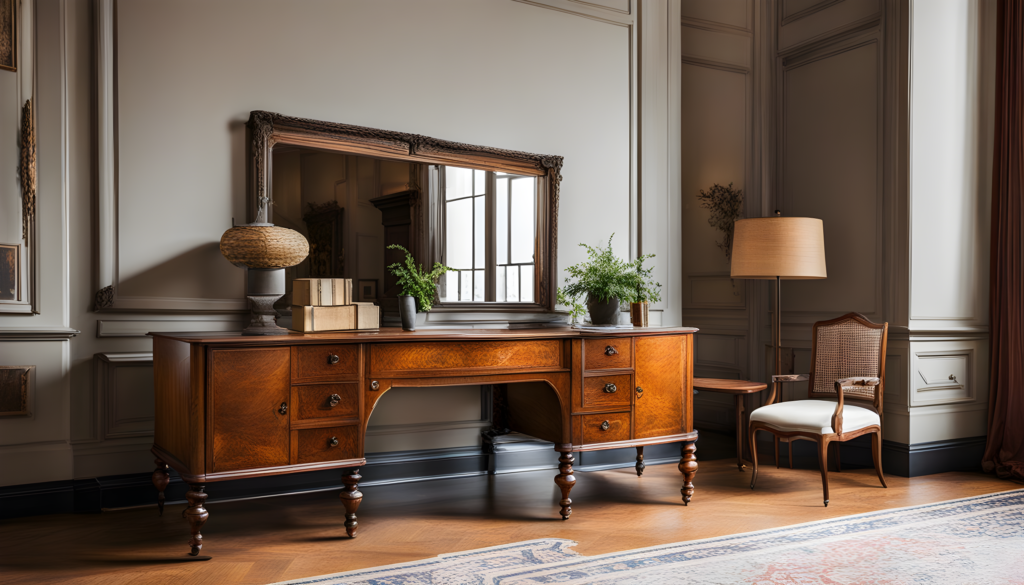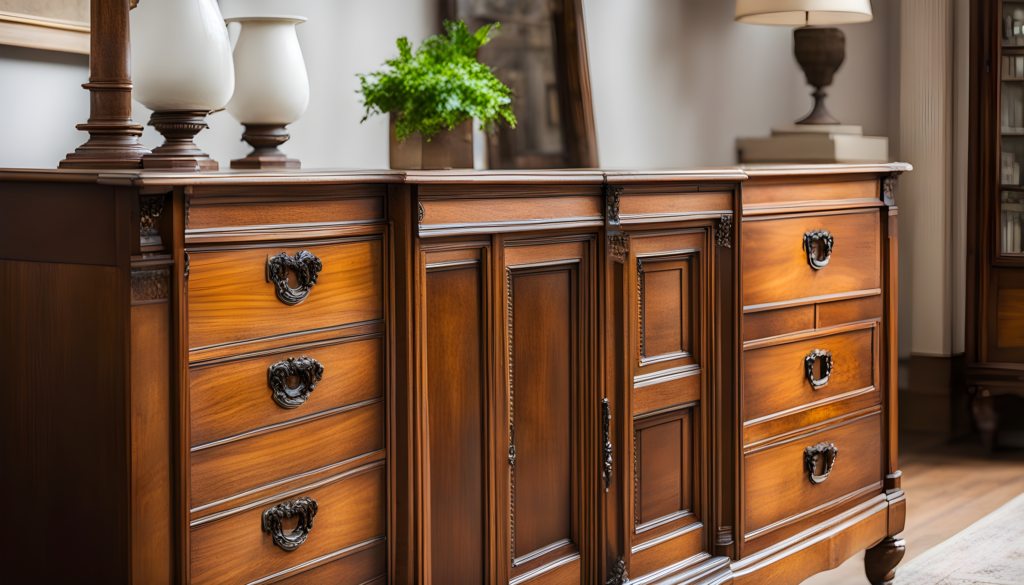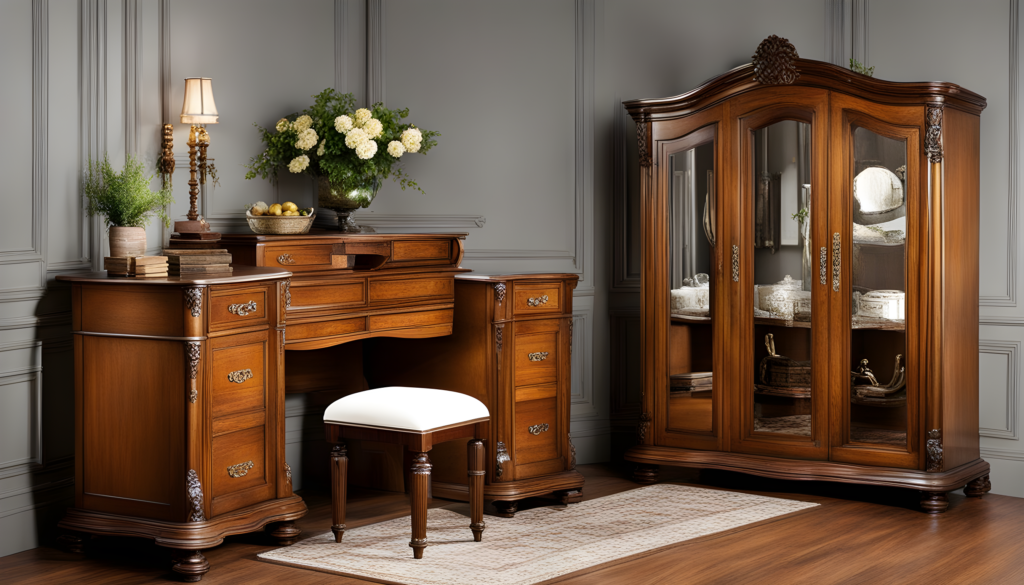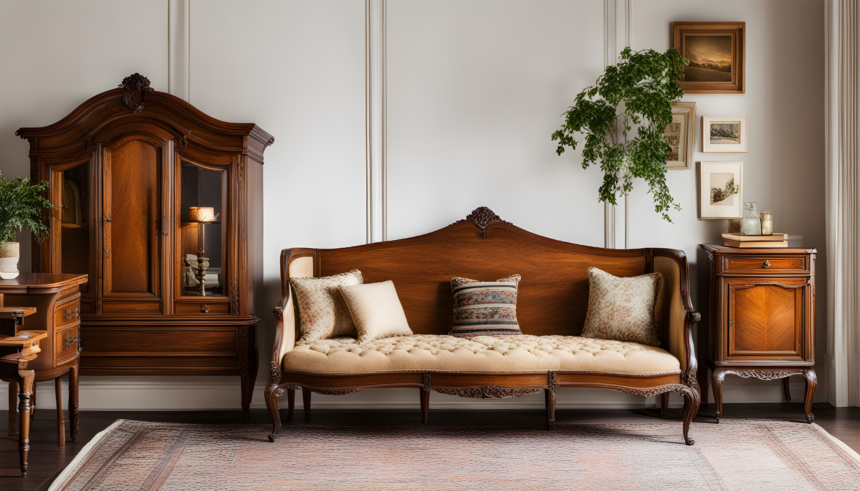Antique furniture possesses an irresistible charm, transporting us back to bygone eras and offering a glimpse into the craftsmanship and aesthetics of the past. But what, exactly, defines antique furniture? What distinguishes it from vintage or simply old pieces? In this comprehensive article, we will delve into the captivating world of antique furniture, explore its history, classifications, characteristics, and value, and answer some common follow-up questions related to this intriguing topic. So, let’s embark on a journey to unravel the secrets of what is considered antique furniture.
Defining Antique Furniture
What is considered antique furniture?

To answer this question, we must establish a clear definition. Antique furniture is typically defined as any piece of furniture that is at least 100 years old. This age criterion serves as the primary factor in distinguishing antique furniture from other types of old furniture, such as vintage or simply aged pieces.
The 100-year threshold is not arbitrary. It allows us to encompass a wide range of historical periods and styles, making antique furniture a treasure trove of design and craftsmanship from different epochs. So, when you come across a piece of furniture and wonder whether it’s truly antique, the first thing to check is its age.
History of Antique Furniture

To understand what is considered antique furniture, it’s essential to delve into its rich history. Antique furniture has been crafted and cherished for centuries, and its origins can be traced back to ancient civilizations.
One of the earliest examples of antique furniture dates to ancient Egypt, where artisans skillfully crafted pieces from wood, ivory, and precious metals. These early creations were not only functional but also decorative, featuring intricate carvings and ornamentation.
Antique furniture continued to evolve through the centuries, with distinct styles emerging in different eras. For example, during the Renaissance, European furniture was characterized by elaborate ornamentation and the use of luxurious materials. In the 17th and 18th centuries, the Baroque and Rococo styles prevailed, introducing opulent designs and curvaceous silhouettes.
The 19th century brought the Victorian era, which is known for its eclectic mix of styles, including Gothic Revival, Renaissance Revival, and Arts and Crafts. In the 20th century, antique furniture saw a resurgence in popularity with Art Deco and Mid-Century Modern designs, reflecting the changing tastes and lifestyles of the times.
Understanding the historical context of antique furniture is crucial for discerning its authenticity and value, as different eras produced distinct styles and materials.
Classifications of Antique Furniture
Antique furniture is not a monolithic category but rather a diverse world of various styles and types. To understand what is considered antique furniture, we must explore its classifications:

- Period Furniture: This category encompasses pieces made during a specific historical period, like the Georgian, Victorian, or Louis XVI styles. Period furniture reflects the prevailing design aesthetics and craftsmanship of its time.
- Style-Based Furniture: Style-based antique furniture is defined by its adherence to specific design movements or schools of thought. Examples include Art Deco, Arts and Crafts, and Mid-Century Modern.
- Regionally Influenced Furniture: Antique furniture can also be classified based on its regional origin, such as English, French, or American. Each region developed its unique design traditions and materials, resulting in distinct styles.
- Type of Furniture: This classification is based on the function of the piece, such as chairs, tables, cabinets, or dressers. Different types of furniture may have different characteristics and values.
- Materials Used: Some antique furniture is valued for the materials from which it is crafted. For instance, mahogany, oak, walnut, and rosewood are highly sought after.
- Maker or Designer: Some antique furniture pieces are highly prized due to their association with renowned makers or designers. Examples include Chippendale, Hepplewhite, and Eames.
Understanding these classifications can help collectors and enthusiasts identify and appreciate the diversity within the realm of antique furniture.
Characteristics of Antique Furniture
What sets antique furniture apart from other aged pieces? Several key characteristics can help determine whether a piece is truly antique:
- Patina: Antique furniture develops a unique patina over time. This is the natural wear and aging of the wood or finish, which gives the piece a warm, lustrous appearance. Fakers often struggle to replicate this authentic patina.
- Construction Techniques: Antique furniture is known for its superior craftsmanship. Dovetail joints, mortise and tenon joinery, and hand-carved details are common in antique pieces. Modern mass-produced furniture typically lacks these fine details.
- Materials: Antique furniture often uses solid wood rather than veneers, which are more common in contemporary pieces. The type of wood used can also be indicative of the piece’s age and origin.
- Hardware: The hardware on antique furniture, such as drawer pulls and hinges, is often hand-forged and unique. Examining these details can provide insights into the piece’s age.
- Design Elements: The design of antique furniture often reflects the style of its era. Whether it’s the ornate carvings of the Baroque period or the sleek lines of Mid-Century Modern, these design elements can help date the piece.
- Provenance: Knowing the history or lineage of a piece can add to its authenticity and value. Documentation that traces the piece’s ownership and origin is highly prized.
- Legible Labels or Marks: Some antique furniture may bear labels, stamps, or marks from the maker or manufacturer. These can be crucial in identifying and dating a piece.
By examining these characteristics, individuals can gain a deeper appreciation for antique furniture and better differentiate it from contemporary or replica pieces.
The Value of Antique Furniture
Antique furniture is not only about historical significance and craftsmanship; it often carries substantial value, making it a coveted collectible. The value of antique furniture is influenced by several factors:
- Rarity: Uncommon or one-of-a-kind pieces tend to have higher value. Limited production runs, unique designs, or historical importance can contribute to rarity.
- Age: Generally, older pieces are more valuable. As mentioned earlier, antique furniture is typically defined as being at least 100 years old, and older pieces often command higher prices.
- Condition: The condition of the furniture plays a significant role in determining its value. Well-preserved, original, and unrestored pieces are generally more valuable.
- Provenance: Pieces with a documented history, especially if they have a noteworthy or famous previous owner, can be significantly more valuable.
- Style and Design: Some styles, such as Chippendale, Queen Anne, or Eames, are highly sought after, leading to increased value.
- Materials: Furniture crafted from rare or highly desirable woods, like mahogany or rosewood, often commands higher prices.
- Market Trends: The antique furniture market can fluctuate based on trends and demand. Styles that are currently in vogue may have a higher value.
- Maker or Designer: Furniture associated with renowned makers or designers tends to be more valuable due to their reputation and influence in the field.
It’s important to note that while antique furniture can be quite valuable, the market can also be unpredictable. Collectors and enthusiasts should research.
Caring for Antique Furniture
Preserving the beauty and value of antique furniture requires special care and attention. Here are some tips to ensure your antique pieces stand the test of time:
- Environmental Conditions: Keep your antique furniture in a stable environment. Avoid extreme temperature fluctuations, high humidity, and direct sunlight, as they can damage the wood, finishes, and upholstery.
- Regular Cleaning: Dust your antique furniture regularly with a soft, lint-free cloth. Avoid using abrasive or chemical cleaners that may harm the finish.
- Protection: Use coasters, placemats, and tablecloths to protect the surfaces from spills, scratches, and heat.
- Avoid Over-polishing: Over-polishing can remove the natural patina that adds character to antique furniture. Use minimal, gentle cleaning to maintain the original finish.
- Restoration: If your antique piece requires restoration, consult with a professional furniture restorer who specializes in preserving the authenticity of antique furniture.
- Proper Handling: When moving or repositioning antique furniture, be careful to lift and support it properly to avoid stress on joints and fragile areas.
- Display and Use: While it’s essential to preserve antique furniture, don’t be afraid to enjoy and use it. Regular use can prevent the wood from drying out and cracking.
- Insurance: Consider insuring your antique furniture, especially if it holds significant value. Insurance can provide peace of mind in case of damage or loss.
Identifying and Avoiding Fakes
The world of antique furniture is not without its share of forgeries and reproductions. To ensure you are investing in genuine antique pieces, here are some strategies to identify and avoid fakes:
- Consult Experts: Seek the guidance of experienced antique dealers, appraisers, or historians. They can provide valuable insights and appraisals.
- Examine Construction: Pay close attention to the craftsmanship. Look for signs of machine-made versus handcrafted elements, and inspect joinery and hardware.
- Materials: Familiarize yourself with the types of wood and materials commonly used in different eras. Knowledge of wood grains, patina, and finishes can help you spot discrepancies.
- Documentation: Authentic antique furniture often comes with documentation, such as receipts, provenance, or labels. Verify the accuracy and completeness of these records.
- Compare with Reference Materials: Research and use books, catalogs, and online resources to compare your piece with known authentic examples.
- Beware of “Too Good to Be True” Deals: If a deal seems too good to be true, it often is. Be cautious when purchasing antique furniture from sources with questionable credibility.
- Trust Your Instincts: If something feels off or doesn’t align with your research, exercise caution and seek a second opinion.
- Consider Professional Appraisals: If you’re unsure about the authenticity of a piece, investing in a professional appraisal can provide clarity.
By being vigilant and knowledgeable, you can protect yourself from the disappointment and financial loss associated with counterfeit antique furniture.
Frequently Asked Questions
- What is the difference between antique and vintage furniture?
Antique furniture is at least 100 years old, whereas vintage furniture is generally between 20 and 100 years old. The primary difference lies in the age of the pieces. - Are reproductions of antique furniture valuable?
Reproductions of antique furniture are not as valuable as authentic antique pieces. However, they can still be aesthetically pleasing and functional. - What’s the best way to care for antique upholstered furniture?
Regularly vacuuming upholstered antique furniture and avoiding direct sunlight can help preserve the fabric. Consult with a professional for restoration and reupholstering when needed. - Is it necessary to refinish antique furniture?
Refinishing antique furniture is generally discouraged, as it can reduce its value. Only refinish if the piece is severely damaged and a professional advises it. - Can I restore antique furniture myself?
Restoring antique furniture requires skill and expertise. It’s advisable to consult a professional restorer, especially for valuable or historically significant pieces. - How can I determine the age of antique furniture without labels or marks?
Examining construction techniques, wood type, and design elements can help estimate the age of antique furniture even when there are no labels or marks. - What are the most valuable types of antique furniture?
The value of antique furniture depends on factors such as rarity, age, condition, and style. Pieces associated with renowned makers or designers often hold high value. - Where can I find authentic antique furniture for sale?
Antique dealers, estate sales, auctions, and reputable online marketplaces are common sources for authentic antique furniture. Always research the seller’s reputation and consult experts when in doubt.
Conclusion:
The allure of antique furniture lies not only in its age but also in the stories it tells through its craftsmanship and design. By understanding what is considered antique furniture, its history, classifications, characteristics, value, and care requirements, you can embark on a captivating journey of exploration and appreciation. Whether you’re a collector, enthusiast, or someone with a newfound interest in antique furniture, the world of antiques offers a treasure trove of beauty and history waiting to be uncovered and cherished.







